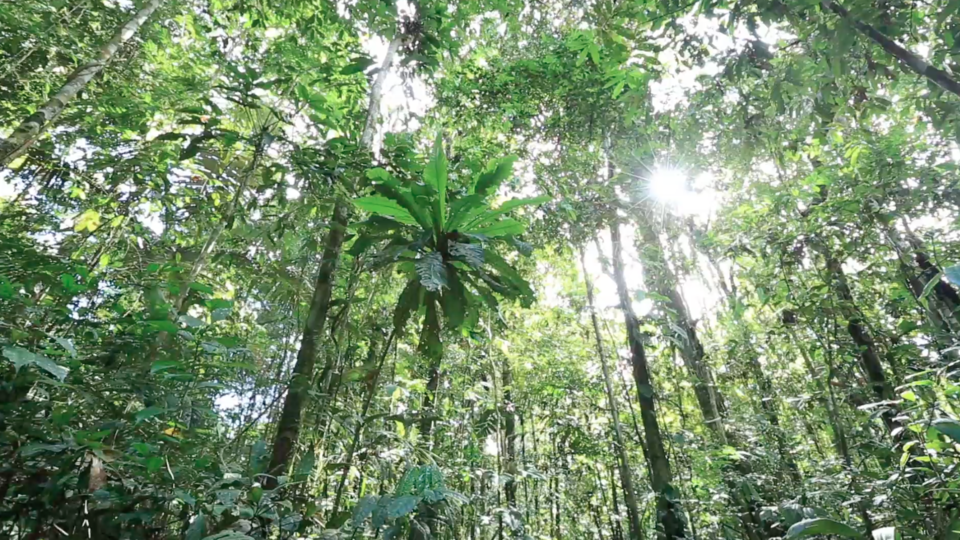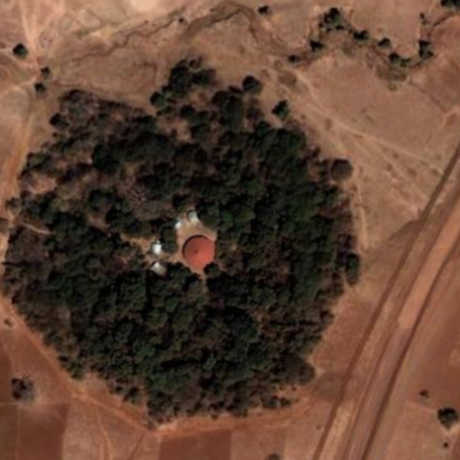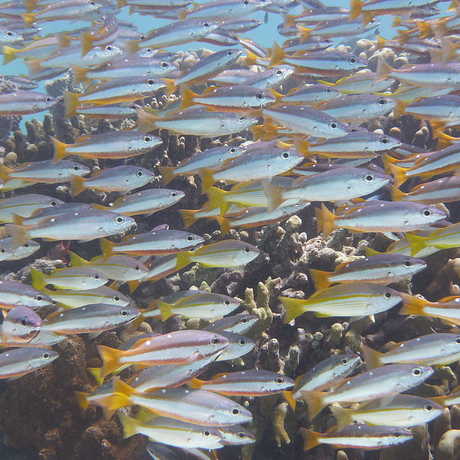Science News
Stories from the Forest

Last week, the Academy convened a one-day Forest Solutions Summit. Leading scientists were joined by NGO leaders, artists, and others to share research, tools, and ideas for saving forests around the world, from our backyard to the Amazon, Africa, and Southeast Asia.
Deforestation is entwined with global greenhouse gas emissions and carbon sequestration. Yet many summit participants stressed the importance of local solutions: addressing the food and water resource needs, now and into the future, and empowering local and indigenous peoples as stewards of their forests.
As the summit came to a close, speakers reflected on recurring themes, underscoring the importance of the interface between humans and forests. Many presenters discussed how local peoples bear the brunt of deforestation and its ripple effects.
- UC Berkeley’s Justin Brashares reported how deforestation leads to disease, child labor, and armed conflict (Science Today reported on his work last summer).
- Rodolfo Dirzo, of Stanford, described the “defaunation” and “rodentation” of the African Savanna: as forests and large mammals are lost, food becomes scarce for locals, and disease rises.
- The Academy’s own Meg Lowman discussed the remaining church forests left in Ethiopia, which provide the simple—and much-needed—human needs of fresh water, crop pollinators, and shade.
- In our own backyard, Alexander Friend of the U.S. Forest Service described the services that both true forests and urban forests provide locally: drinking water, storm water buffering, energy savings, and even increased property values and well-being.
When it comes to protecting forests and the natural world in general, “world inequality is the root of the problem,” said UC Berkeley’s Paul Fine. But just throwing big money at the problem isn’t the solution, especially when money comes from extracting resources such as oil, timber, and big agriculture. It’s the local people who will protect their land, said moderator Rhett Butler of Mongabay, in the program’s introduction.
Flora Lu, of UC Santa Cruz, described the Waorani people of Ecuador, whose home in Yasuní National Park is one of the most biodiverse and strictly protected areas of the world. While Ecuador has seen devastatingly high rates of deforestation, this region is “intact because the Waorani people are fiercely protective of their territory.” They’ve defended their home—20,000 square kilometers within the park—with spears, deterring most outsiders from venturing into their land until the 1990s. Now, the oil-rich area is threatened with development that could hurt the local people in the long run.
Jose Fragoso demonstrated the advanced modeling process with which he studies how local and indigenous people take care of their forests. “300 to 500 million indigenous people occupy 20 percent of the world’s protected lands,” he said. And his models show that “self governance by forest peoples can ensure sustainability in biodiversity, forest covers and livelihoods within their lands.”
The summit also featured education and training projects that open doors to involve more people in forest conservation. Worku Mulat described the role of girls in protecting forests in Ethiopia (and you too can help), while Terak Milleron of Caura Futures reported their successful efforts to equip and train locals in Venezuela’s Caura River Basin to climb rather than cut down palm trees to harvest nutrient-rich fruit.
Globally, food production uses 40 percent of Earth’s land and presents major threats to forests. But it doesn’t have to be so, said the Academy’s Jon Foley. We already grow enough for all seven-plus billion people on the planet, but much of that food goes to waste, leaving one billion people “food insecure.” Foley made the case that, by addressing food waste, rethinking the food we grow (steering away from crops for biofuel and animal feed) and how we grow it (reducing water use and chemicals) and rethinking our diets with more sustainable protein options, we could feed the world’s growing population without clearing more forests.
Of course, solutions have to come from large corporations, too. Guillermo Castilleja of the Moore Foundation described their work in protecting the Amazon. Targeting five companies that produce 50 percent of the beef and 90 percent of the soy in threatened areas in South America, the Moore Foundation is working on secure commitments to stop expansion into more forests. Emily Burns of Save the Redwoods talked about working across public and private lands to curb logging, agriculture, and urbanization, and look toward more progressive forest management.
Summit presentations sounded another recurring theme: broadening our worldview is critical to devising forest solutions that make sense for diverse communities. The Academy’s Brian Fisher coined the term “bioliteracy,” insisting that just getting people outside to understand who and what they live with develops knowledge for conservation efforts. Kirsten Silvius discussed varying approaches to participatory monitoring of forests (getting locals involved in both the science and management of their land) and western citizen science projects. And D.C. Randle, a high school teacher in Minnesota who has taken underserved American students to the Amazon for twenty years, recounted how the forest can inspire high school students with a lifelong passion for nature, and often a career in science.
The Forest Solutions Summit spurred conversation and cross-pollination among the forest research and conservation community—an important step in bringing organizations together (whether their mission is to protect forests, or wildlife, or people) to reach solutions that empower local people to protect their lands.

